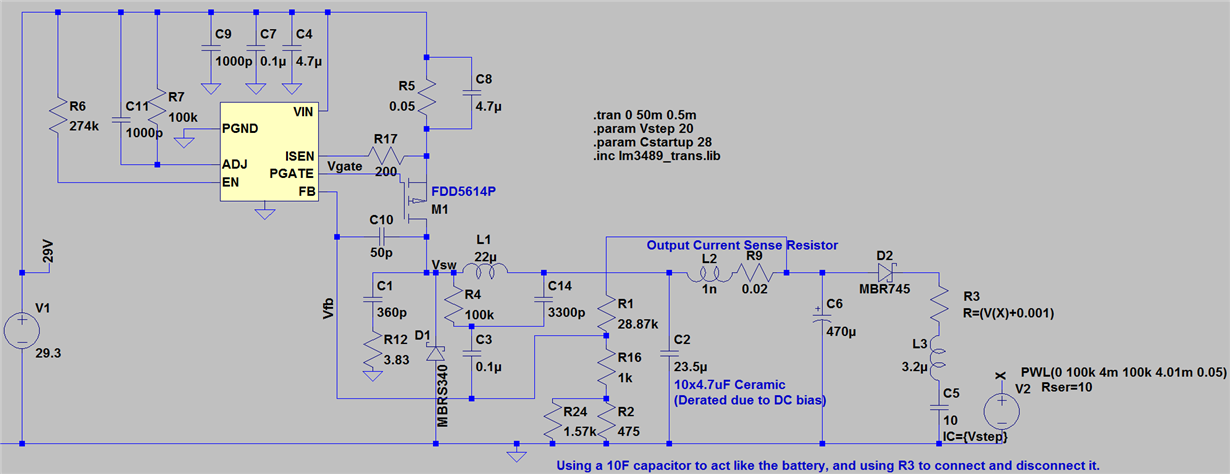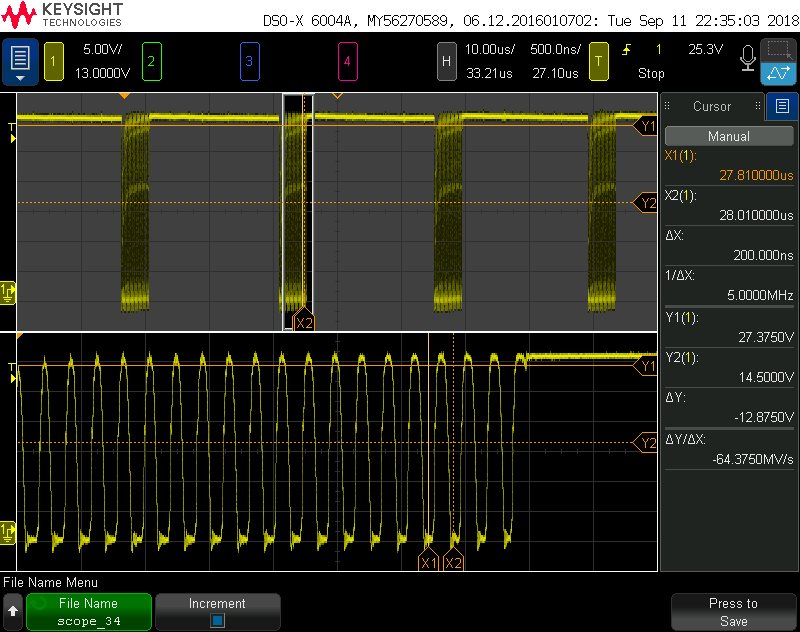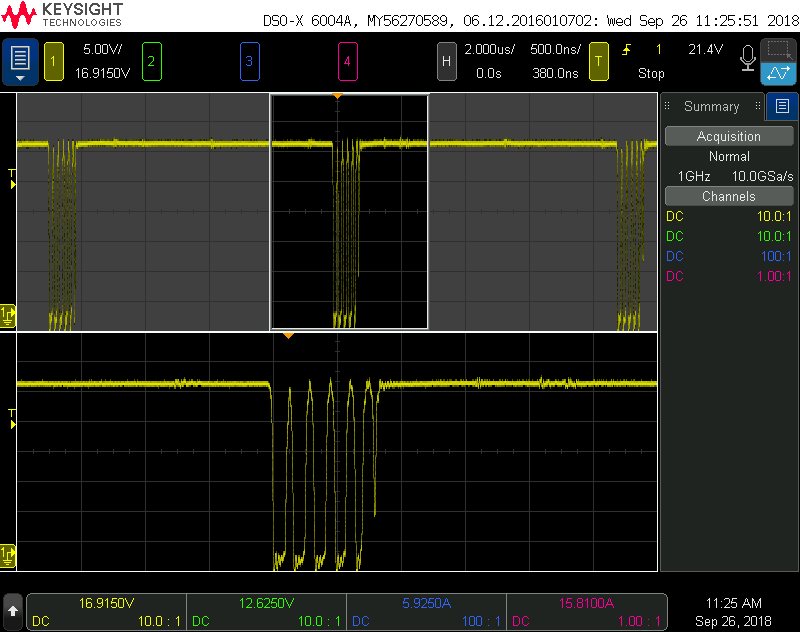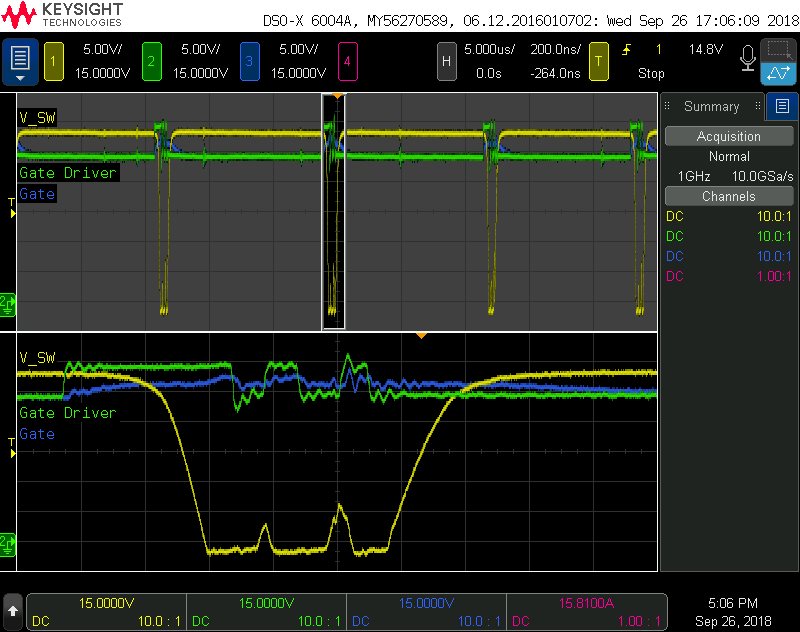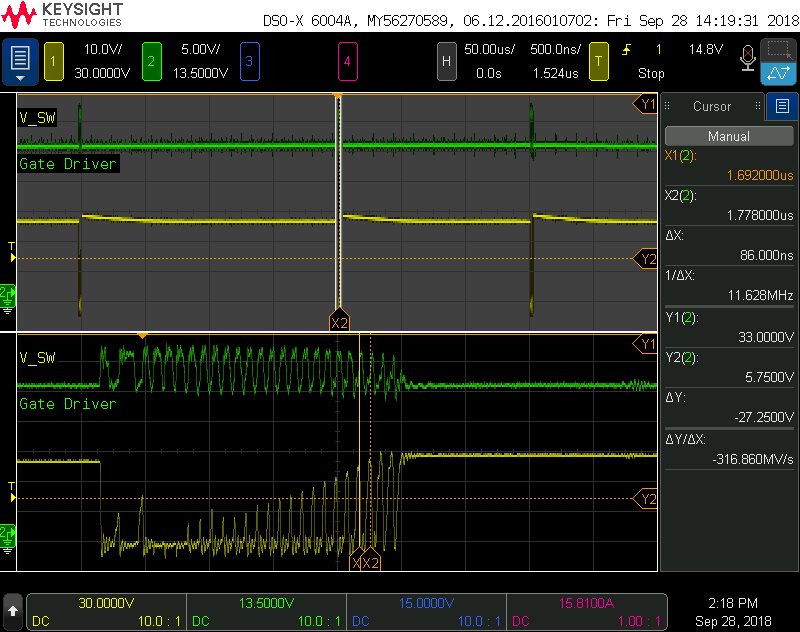Other Parts Discussed in Thread: LM25085
Shown above is a 4.2A SLA charger circuit with external 4.2A current limit circuit removed because the issue happens with that circuit removed. The circuit performs well, meeting its desired output voltage, current, and dominant switching frequency. The problem is that during the 'off time' of each switching cycle the controller is oscillating at ~5MHz instead of turning the FET off. The gate driver inside the LM3489 is somewhat weak and during this time the FET goes linear and dissipates so much heat that it exceeds its junction rating. I have not found any way to stop this from oscillating, below is a list of some of the changes I've tried (one at a time):
- Removed the 470uF electrolytic to increase the ripple voltage
- Remove the ceramic capacitor bank and rely on the electrolytic (because the ceramic capacitors have an SRF of about 3MHz)
- Replace the C3/R4/C14 ripple network with just a feed forward capacitor
- Connect that feed forward capacitor after the 20mOhm sense resistor
- Feed forward capacitance values tested range from 100pF through 1uF
- Attempted to reduce the switching node slew rate by:
- Increasing the snubber all the way to 0.1uF/0ohm
- Using a FET with a much larger Qg
- Putting a capacitor in parallel with the FET gate
- Lifted the FB pin and wired a very short and direct feedback network
- Modified the LM3489 Eval board with my components
Despite all of those attempted changes, the part still oscillates during the off-cycles. I am out of things to try. How can I get this to stop oscillating?


